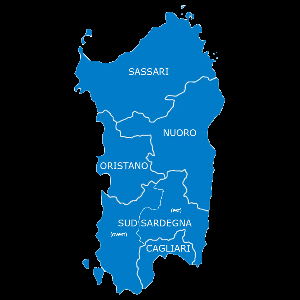Identification and quantification of potential microplastics in shellfish harvested in Sardinia (Italy) by using transillumination stereomicroscopy

Accepted: 8 November 2022
HTML: 27
All claims expressed in this article are solely those of the authors and do not necessarily represent those of their affiliated organizations, or those of the publisher, the editors and the reviewers. Any product that may be evaluated in this article or claim that may be made by its manufacturer is not guaranteed or endorsed by the publisher.
Authors
Plastics are non-biodegradable polymers made up of different groups of petrochemical materials. Several biotic and abiotic factors can change the density of plastic fragmenting it and originating microplastics (MPs). MPs have been defined as small pieces of plastic less than 5 mm in size. Due to their small size, they are an emerging concern in the marine environment since they can be ingested by aquatic organisms, especially filter-feeding organisms, such as bivalve mollusks. Impacts of MPs exposure have been shown at various levels of biological organization, from cellular to tissue to individual and population levels. For example, oxidative stress and inflammation have been observed in copepods and mussels, obstruction and physical damage of the digestive tract were found in fish and swimming behavior alterations, disruption of foraging and feeding behavior and overall reduced fitness and survival were observed in fish and oysters. In addition, MPs can act as a vector for the transfer of chemicals to marine biota. The aim of the present study was the identification and quantification of potential MPs in shellfish harvested in Sardinia (Italy) by using transillumination stereomicroscopy. Bivalves were collected from 4 of the main production areas located along the Sardinian coast and selected according to the principles of the risk assessment. The results of the present study demonstrated the presence of potential MPs in 70% of the analyzed samples: the presence of MPs in bivalve mollusks may pose a threat to food safety, and there is an urgent need to evaluate the potential risks of MPs to human health.
Supporting Agencies
NoneConception or design of the work
Critical revision of the article
Conception or design of the work
data collection
Data collection
data collection
data collection
Data analysis and interpretation
Data analysis and interpretation
Data analysis and interpretation
Critical revision of the article
Final approval of the version to be published
How to Cite

This work is licensed under a Creative Commons Attribution-NonCommercial 4.0 International License.
PAGEPress has chosen to apply the Creative Commons Attribution NonCommercial 4.0 International License (CC BY-NC 4.0) to all manuscripts to be published.
Similar Articles
- Alessia Armellini, Gianluigi Ferri, Carlotta Lauteri, Antonio De Camillis, Luca Pennisi, Microplastics in Sepia officinalis caught on the central Adriatic coast: preliminary results , Italian Journal of Food Safety: Vol. 12 No. 2 (2023)
You may also start an advanced similarity search for this article.

 https://doi.org/10.4081/ijfs.2022.10738
https://doi.org/10.4081/ijfs.2022.10738



